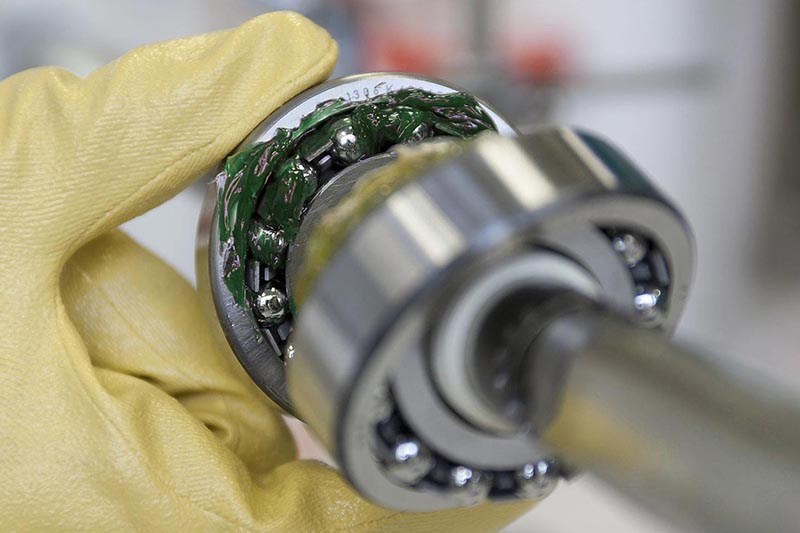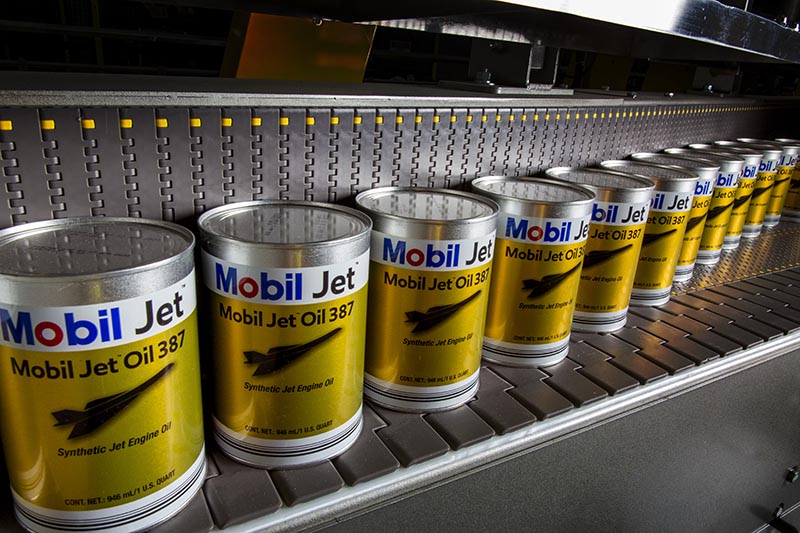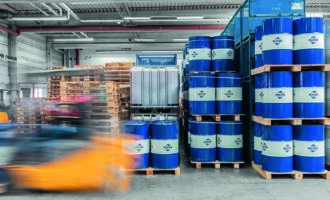
U.S. FTC’s “Green Guides” on sustainable lubricants
By Dr. Mathias Woydt, Managing Partner, MATRILUB, and Dr. Raj Shah, Director, Koehler Instrument Company
In today’s increasingly eco-conscious society, “green claims,” i.e. advertising touting a product’s bio-based or recycled content have a significant impact on consumers’ decisions to buy and even pay a premium for such products.
The U.S. Federal Trade Commission (FTC), whose mission is “protecting the public from deceptive or unfair business practices and from unfair methods of competition through law enforcement, advocacy, research, and education,” first published the “Green Guides” in 1992. They have since been revised in 1996, 1998, and 2012. On December 14, 2022, the FTC announced that it was seeking public comment on potential updates and changes to the Green Guides for the Use of Environmental Claims. The FTC said it seeks to update the guides based on increasing consumer interest in buying environmentally friendly products.
The deadline for the public comment period, which was originally set to expire on February 21, 2023 was extended to April 24, 2023.
The Green Guides provide guidance on 1) general principles that apply to all environmental marketing claims; 2) how consumers are likely to interpret particular claims and how marketers can substantiate these claims; and 3) how marketers can qualify their claims to avoid deceiving consumers.
Although the Green Guides do not have the effect of law, the FTC can bring an enforcement action under Section 5 of the Federal Trade Commission Act, which prohibits ”unfair or deceptive acts or practices in or affecting commerce.” Environmental, broad and unqualified claims, like “green” or “eco-friendly,” fall under the Green Guides. Some attributes related to the future class of sustainable lubricants fall under the Green Guides:
- Competent and reliable scientific evidence must support carbon offset claims (§260.5). Appropriate accounting methods must be used to ensure that they measure emission reduction properly and don’t sell them more than once.
- Non-toxic products need competent and reliable scientific evidence that the product is safe for both people and the environment (§260.10).
- Claims on degradability mean that the “entire product or package will completely break down and return to nature within a reasonably short period of time after customary disposal (§260.8), e.g., readily or ultimate biodegradation. Primary biodegradation—which is defined by the Organisation for Economic Co-operation and Development (OECD) as “the alteration in the chemical structure of a substance, brought about by biological action, resulting in the loss of a specific property of that substance”— is therefore not acceptable as a claim.
- Claims about renewable material may imply that a product is recyclable, made with recycled content, or biodegradable (§260.16). One way to minimise this risk is to identify the material used clearly and explain why it is renewable.
- Recycling for a product must be available to at least 60% of consumers or communities (§260.12).
- Claims on recycled content can only be made for materials that have been recovered or diverted from the waste stream during the manufacturing process or after consumer use (§260.12).
Bio-based vs. man-made
Base oils and/or additives used in lubricants may have a content of renewables and/or be synthesised from biogenic resources.
The FTC, using its Penalty Offense Authority, filed a case on April 8, 2022 against U.S. retailers Kohl’s, Inc. and Walmart, Inc., for falsely marketing dozens of rayon textile products as bamboo1. Both companies were also charged with making deceptive environmental or green claims, touting that the “bamboo” textiles were made using eco-friendly processes, while converting bamboo into rayon requires the use of toxic chemicals and results in emission of hazardous pollutants.
If one takes the structure and allegations of the FTC’s complaints as reference for renewable resources, one must pay attention to the impact of their transformation or synthesis processes, when marketing “highly renewable” products displaying environmental benefits, such as “free of harmful chemicals as well as using clean and non-toxic materials.” The definitions of “naturally occurring substance” and “not chemically modified substance” within REACH regulation are similar 2. In other words, one can lose the attribute of bio-based when there are too many “man-made” elements.
Environmentally acceptable lubricants

The relationship between lubricant release and water quality has been known for many decades and undisputed. Environmentally acceptable lubricants (EALs) depend on biodegradability, apart from aquatic toxicities and bioaccumulation. Because of their biodegradability, the impact of spills and leaks are minimised. Biodegradability and toxicities are non-technical and non-functional requirements, but legal ones.
EALs or biolubes have been available in the market for more than 30 years. However, because of their higher price, market penetration has been limited. With respect to the FTC´s requirements, the claimed “bio-no-tox” properties of EALs depend on standardised test protocols and specifications from “voluntary consensus standard bodies”3, as the guides do not establish standards for environmental performance or prescribe testing protocols. However, the definitions used for ultimate and ready biodegradation in the European Ecolabel (EU 2018/1702), European biolubes (EN 16807), Germany’s Blue Angel (RAL-UZ178), and the U.S. Vessel General Permit 2013 4, to cite a few, are in-line with the definition of the FTC in §260.8.
The different toxicity criteria for EALs also comply with the requirements by the FTC, as they come from a “voluntary consensus standard body.” At this point, ecolabels or specifications or guides from standardization bodies offering consensus processes represent a safe strategy for developing “green claims” for lubricants.
Sustainable lubricants
There is no existing clear pathway for or agreement on “sustainable” lubricants, especially on a “scientific” basis as per the FTC guideline. Further, the FTC´s “Green Guides” does not include specific guidance on sustainable claims because they lack sufficient evidence. This may hinder their development and represent a risk for their marketing because the technical direction in the future is unclear. The sustainability journey just started and manifold strategies have surfaced within companies and organisations.
Where sustainability is concerned, industry, the public and scientists share different viewpoints alongside constantly changing definitions and policies. The term sustainability remains diffused and vague. As the 17 sustainable development goals (SDGs) from the United Nations are wide and broadly formulated, organisations and companies are free to define their own roadmap, which may conflict with the FTC, as there is no consensus on a clear definition of a sustainable lubricant. The following key attributes or indicators are on the table and require uniform and quantifiable measurements:
a. Sustainability in the upstream chain by sourcing renewable raw materials, which will be supplied in circular business models. This seems to be achievable because lubricants represent overall only ~1% of fuel consumption.
b. Low carbon intensity or carbon neutral lubricants (base oils and additives), even with a negative footprint.
c. In-use benefits of low-friction lubricants results in avoided carbon emissions during the use phase.
Renewable content
Renewable content is widely used as the basis for “green claims.” Only the European biolube schema (EN16807) requires a renewable content greater than 25%. The U.S. Department of Agriculture’s BioPreferred Program requires between 25% and 72%, depending on the application. The bio-based content is determined by test methods from either ASTM International (ASTM D6866) or European Standards (EN 16640).

The renewable content when measured by either test method may not necessarily conform with the FTC´s guide when the transformation of renewable resources or synthesis processes needs the use of toxic chemicals and/or results in emissions of hazardous pollutants.
Energy-conserving characteristics of lubricants
Friction consumes 20-33% of the total global primary energy consumption 5, 6. The technical guideline for Scope 3, Category 11, requires only reporting from the use phase of sold (finished) products, like for vehicles. The greenhouse gas (GHG) protocol does not address savings nor emissions that have been avoided, only with reporting. In November 2013, the World Resources Institute7 made a commentary to the fifth report of the Intergovernmental Panel on Climate Change (IPCC):
“Emission mitigations occurring outside the life cycle or value chain of a product but resulting from the use of that product. Fuel-efficient tires, energy-efficient ball bearings, etc. are examples of products (goods and services) avoiding emissions.”
The Avoided Emissions Framework8 orients the definition closer to the use phase. Potential avoided emissions (PAE) are emission reductions that occur because of a solution, product, or service that provides the same or similar function as existing products in the marketplace, while its use emits significantly less GHG emissions or enables emission reductions of a third party. Avoided emissions can be translated as the difference between GHG emissions from a business-as-usual (BAU) baseline scenario and GHG emissions from a climate change solution scenario.
Claims on energy conservation and thus CO2 reductions can only be marketed, if widely recognised procedures for determining effective CO2 reductions through frictional reductions and extended longevities are in place. Tribology and lubrication sciences can annually deliver mediumto long-term carbon dioxide mitigations of 3.6-11.3 gigatons CO2eq. during the use phase (downstream) and can compete with carbon dioxide removal sinks.
Coming back to the FTC, the question is how to quantify the CO2 and GHG benefits for a product or service without double counting, based on guidelines established by consensus organisations such as ISO, ASTM International or EN.
This is an important question if politics continue to monetise avoided CO2 emissions in the use phase by tribological measures, because carbon allowances represent intangible tradable assets, which are to be determined precisely from the point of view of tax laws. In early 2022, the EU-ETS emissions trading price corridor ranged from EUR75 (USD81.80)/t CO2eq to EUR98 (USD108.88)/t CO2eq, with a peak of EUR105.30 (USD114.84)/tCO2eq. on February 27, 2023.
Specifications development
The American Petroleum Institute (API), the Union of the European Lubricants Industry (UEIL) and the German Lubricants Industry Association (VSI) have established working groups or task forces to create a lubricant life-cycle assessment (LCA) methodology and sustainability criteria for lubricants. The API just finalised its technical report (see story on page 6). However, under the Green Guides, only “voluntary consensus standard bodies”9, 10 have the authority to develop and maintain voluntary consensus standards. These are ‘‘organisations, which plan, develop, establish, or coordinate voluntary consensus standards using agreed-upon procedures,” such as ISO, ASTM International, EN, DIN, etc.
Conclusions
The FTC’s Green Guides play an important role in creating a vibrant market for sustainable lubricants in the United States. This encompasses eco-toxicological properties, low carbon intensity, greenhouse gas emissions and renewables as well as avoided emissions during the use phase. Reducing CO2 by friction is certainly the strongest attribute of lubricants in terms of sustainability. If future policies intend to allocate CO2 credits from avoided greenhouse gas emissions by reducing friction and extending longevity, then schemas, methodologies, and/or standards are required to quantify these savings so manufacturers can market them properly according to the FTC’s guidelines.
References
1 M. Levetown, FTC Green Guides Enforcement, Compoundings, July 2022, Vol. 72, No. 7, p. 31-32
2 EC/1907/2006,Title I, Chapter 2, Article 3, items 39 and 40
3 Federal Trade Commissions, Environmental Claims: Summary of the Green Guides, October 2012, https://www.ftc.gov/business-guidance/resources/environmental-claims-summary-green-guides
4 U.S. EPA, General permit for discharges incidental to the normal operation of a vessel, U.S. Federal Register, Vol. 78, No. 71, Friday, April 12th, 2013, p. 21938-21948, notices
5 M. Woydt, The importance of tribology for reducing CO2 emissions and for sustainability. WEAR, Vol. 474–475, 15 June 2021, 203768, https://doi.org/10.1016/j.wear.2021.203768
6 M. Woydt, E. Bock, V. Bakolas, T. Hosenfeldt, R. Luther and C. Wincierz, Effects of tribology on CO2 emissions in the use phase of products — Contributions of tribology to defossilization, German Society for Tribology, GfT, April 2023, open access
7 L. Draucker, Do We Need a Standard to Calculate “Avoided Emissions” World Resources Institute, November 5, 2013.
8 A. Stephens and V. Thieme, Towards >60 Gigatons of Climate Innovations. Module 2 – The Avoided Emissions Framework (AEF), September 2020
9 F. D. Raines, Federal participation in the development and use of voluntary consensus standards and in conformity assessment activities, circular no. A-119, revised, FTC, February 10, 1998.
10 C. Sunstein, Federal participation in the development and use of voluntary consensus standards and in conformity assessment activities, Federal Register, Vol. 77, No. 62, 19357-19360, Friday, March 30, 2012, notices







